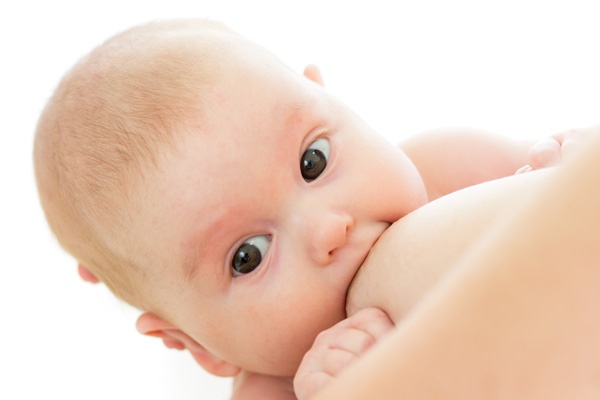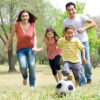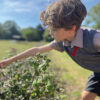
by Dr Margit Gabriele Muller
Leading vet and award winning author
It is wonderful for small children to grow up with pets. It not only provides them with a companion and friend but also teaches them responsibility and life skills, enhances their self-confidence, and keeps them happy and healthy.
However, parents might find it hard to choose which pet is the most suitable one for their child. The right choice depends on the child’s age and character – introvert or extrovert – and also on the family’s financial situation and how much time and space they have. There is no ‘one size fits all’ solution and parents should carefully consider their own personal circumstances and then decide which pet to have. It should never be a spontaneous decision as having a pet is a big responsibility.
To help with decision making, let’s look at some suitable pets for small children.
Dogs
Dogs are definitely one of the most preferred pets for children. They can become a child’s best friend, trusted confidante and loving companion that will accompany them through their childhood. Although lots of parents favour a puppy, an older well-trained and well-behaved dog is more suitable for small children. They are much more relaxed and forgiving with children and also have a greater protector instinct.
Having a dog gives a child self-confidence and self-esteem and also develops their nurturing skills. In studies, dog ownership has also been linked to improving children’s immune systems and overall physical and mental health. The life expectancy of dogs is between 10 to 16 years making them ideal pets for childhood. This, however, does come with a long-term responsibility and financial implications.
Rabbits
Rabbits are a real favourite pet for kids. They are adorable and have a gentle, sweet personality. Small kids love their fluffy fur and enjoy cuddling and playing with them. As rabbits need care when handling, they are an ideal pet for kids to learn how to be careful and considerate with other living beings.
Rabbits can become very tame. With time, they can learn to come when you call their name and jump up on your lap on command. They are perfect for feeding by hand, for example with carrots or lettuce which is great fun for small children to do. Rabbits can also be toilet trained so that there is not much mess when they run around. If your kids would have loved a dog but that’s not possible, then an added bonus is that rabbits can be trained to walk outside on a leash. Their life span is eight to 12 years which makes them ideal long-term companions.
Guinea pigs
Guinea pigs are much loved by children as they are very funny pets. It’s best to keep them in pairs as they need company and should not be kept alone. Guinea pigs are usually good natured and friendly pets that can become very tame.
Guinea pigs require a lot of ongoing attention and want to be entertained and stimulated. Therefore, they’re an attractive pet for small kids as they can play with them a lot and give them their love and affection. Guinea pigs can be easily carried around or held which is enriching for children. Their life span of around five to seven years makes them great pets for small children.
Budgies
Birds, and especially budgies, are among the most favorite pets for children. They are ranked directly behind dogs and cats in worldwide popularity. Budgies are really suitable birds as they become very friendly, tame and affectionate. They are very docile and can become
great companions.
As they are very sociable birds, budgies should be kept in pairs or larger groups. Children enjoy observing how they play with each other because it provides great entertainment and fun. In addition, it’s a real delight to hear them chirping from morning till night. With attention and training, some budgies even try to mimic human voices.
They are inexpensive and low maintenance to keep. Their life expectancy ranges between five to eight years, but with good care they can live even longer.
Fish
Fish are not on the list of ideal pets for many parents. They are often thought as being a bit boring for children, but fish are actually ideal pets for children in general and particularly for children with allergies. A beautiful aquarium with multiple fish of different colours relaxes nervous children and can considerably calm them down. The same applies to children with attention deficit disorder as it helps them to concentrate and focus more.
Fish can even have a beneficial impact on diabetic children!
Fish in aquariums require proper, constant care which can be a good task for children as they learn responsibility and how to take care of an animal. Their life span ranges from three to seven years depending on the fish species and proper care.
Parents should try to find the most suitable pet for their child – there are many options, and they shouldn’t just go for the most obvious pet without considering all the factors. Finding the right pet can lead to a wonderful relationship that brings great benefits for both the pet and the child.
Dr Margit Gabriele Muller, leading vet and award winning author of Your Pet, Your Pill: 101 Inspirational Stories About How Pets Lead You to A Happy, Healthy and Successful Life
out now, available on Amazon.

 Kids love being involved with grown-up tasks, so one of the best ways to encourage a healthy relationship with food is by asking them to help out in the kitchen. Allowing them to handle the ingredients at each stage of cooking a meal helps them become more familiar with the food they’re eating, and is a great way to reduce feelings of anxiety at mealtimes.
Kids love being involved with grown-up tasks, so one of the best ways to encourage a healthy relationship with food is by asking them to help out in the kitchen. Allowing them to handle the ingredients at each stage of cooking a meal helps them become more familiar with the food they’re eating, and is a great way to reduce feelings of anxiety at mealtimes. If you’ve got the outdoor space, why not grow your own fruits and vegetables? Not only is this a fun way to teach your family about where their food comes from, but your little ones are also more likely to eat the food if they’ve grown it themselves. By the time a new ingredient is ready to plate up, your child will already be familiar with the shape and smell – all that will remain is to taste it!
If you’ve got the outdoor space, why not grow your own fruits and vegetables? Not only is this a fun way to teach your family about where their food comes from, but your little ones are also more likely to eat the food if they’ve grown it themselves. By the time a new ingredient is ready to plate up, your child will already be familiar with the shape and smell – all that will remain is to taste it! Turning mealtimes into a game is another great way to encourage your children to have a healthy relationship with food. Consider creating a rewards chart and give everyone a star for each fruit or vegetable they eat. Why not add an extra element of competition by offering a prize to whoever has the most stars by the end of
Turning mealtimes into a game is another great way to encourage your children to have a healthy relationship with food. Consider creating a rewards chart and give everyone a star for each fruit or vegetable they eat. Why not add an extra element of competition by offering a prize to whoever has the most stars by the end of Sometimes, all it takes it a little creativity to get your little ones to eat their meals, so it’s worth taking some extra time to present their dishes nicely. For example, experimenting with colour and choosing a vibrant array of vegetables served on matching tableware is a great way to make your dishes look more appetising. Add an extra touch of artistic flair by making fun faces out of the ingredients.
Sometimes, all it takes it a little creativity to get your little ones to eat their meals, so it’s worth taking some extra time to present their dishes nicely. For example, experimenting with colour and choosing a vibrant array of vegetables served on matching tableware is a great way to make your dishes look more appetising. Add an extra touch of artistic flair by making fun faces out of the ingredients. In some cases, it’s the taste and texture of vegetables that can put your little ones off eating them. So, one of the easiest ways to get your children to eat their vegetables is when they don’t know they’re there at all! This is a great way to up your family’s vitamin intake, especially if the children haven’t been swayed by your previous tactics.
In some cases, it’s the taste and texture of vegetables that can put your little ones off eating them. So, one of the easiest ways to get your children to eat their vegetables is when they don’t know they’re there at all! This is a great way to up your family’s vitamin intake, especially if the children haven’t been swayed by your previous tactics.

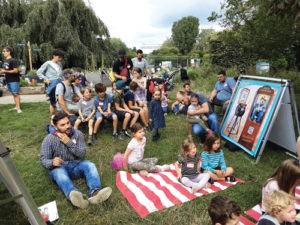 Of course, this isn’t the reality with most dads. You will probably know a whole host of dads who are interested, engaged and fully involved with their children. So why doesn’t this factor into our thinking more often? Why do we still advertise ‘mum and baby groups’ when they are actually open to anyone with an infant? Why do some establishments still only have changing tables in the ladies’ toilets? Why are men still eyed with suspicion when they hang out by a park on a Saturday morning, as if they couldn’t possibly be there with their own children?
Of course, this isn’t the reality with most dads. You will probably know a whole host of dads who are interested, engaged and fully involved with their children. So why doesn’t this factor into our thinking more often? Why do we still advertise ‘mum and baby groups’ when they are actually open to anyone with an infant? Why do some establishments still only have changing tables in the ladies’ toilets? Why are men still eyed with suspicion when they hang out by a park on a Saturday morning, as if they couldn’t possibly be there with their own children?
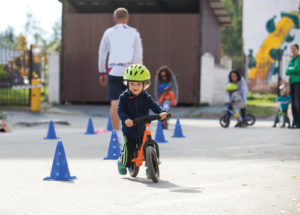 Developing skills
Developing skills


